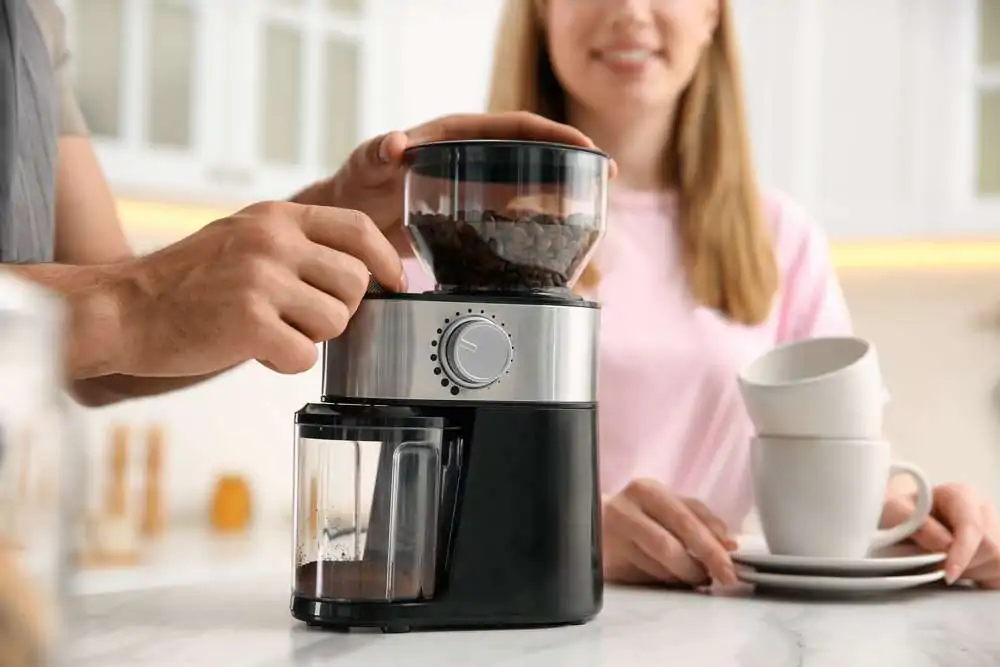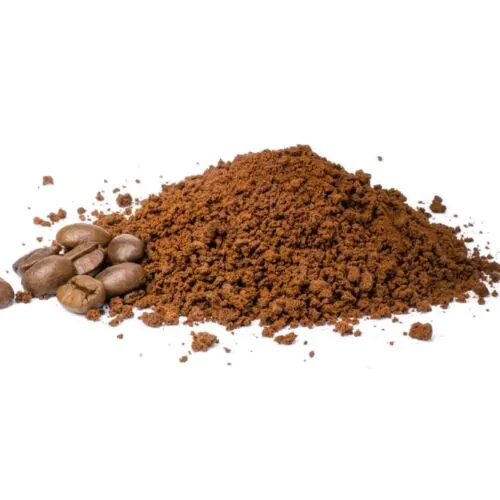Instant coffee is an easy way to start your morning, but how is coffee powder made? It comes from spray-dried or freeze-dried coffee concentrate; let’s learn more.

I don’t know about you, but I’m amazed how a spoonful of powder mixed with water can turn into a cup of Joe. That’s why I simply had to know how it works; so, how is coffee powder made? The science behind it is pretty simple: coffee powder is made by taking the water out through the dehydration process.
While you’re here, don’t forget to check our recommendations for the best instant coffee brands. Now, let’s dive into the world of instant coffee.
What Is Coffee Powder?
Coffee powder is exactly what the name suggests: coffee in a powdered form. It’s more commonly referred to as instant coffee.
Arguably, coffee powder is the most convenient alternative to regular coffee. It’s affordable, you can buy it almost anywhere, and it turns hot water into a cup of java within seconds.
A lot of coffee drinkers are suspicious of instant coffee because it sounds too good to be true. However, it’s worth noting that there’s no chemical alteration behind instant coffee. Some flavored versions and products designed to have a longer shelf-life will have additional ingredients and preservatives, but most instant coffee is pure coffee.
So, while you may hear people argue that it’s not real coffee, it is. Those who prefer more intricate brewing processes will look down on it, but instant coffee has its virtues. If you’re short on time, hate complicated brewing methods, or simply like the taste of instant coffee, don’t let anyone stop you from enjoying a drink made with coffee powder.
History Of Instant Coffee Powder
What’s impressive about instant coffee is that it’s been around for quite some time now, longer than most people would expect. It may even be older than the cappuccino, as an iteration of this drink as we know it wasn’t created until the early 1900s.
The earliest form of coffee powder was invented in the UK sometime in the 18th century. Back then, it was called a “coffee compound,” and the nation’s government even patented it.
However, little is documented about the first patented instant coffee. We know that perfecting the product took about a century, with many inventors trying to refine the development process.
Mass production of instant coffee started with George Constant Louis Washington, not to be confused with the first President of the United States. The businessman got his hands on the patent in 1909. Not long after, WWI broke out, and that’s when instant coffee surged in popularity.
Given the simplicity and convenience that coffee powder offers, this comes as no surprise. In fact, many soldiers still drank that same “cup of George” (as they nicknamed it) even after the war.
During the interwar period, instant coffee production got more advanced. In 1938, Nestlé developed its instant coffee targeted at the international market, Nescafé. The rest is history.
How Is Coffee Powder Made
As we already established, making instant coffee powder doesn’t involve using chemicals and complicated processing methods. In fact, the whole thing is much simpler than you might think.
There are two methods for making instant coffee: spray-drying and freeze-drying.
Spray-Drying

The spray-drying method is exactly what it sounds like; concentrated coffee is sprayed as a mist in a large hot-air chamber at 415°F. While the coffee droplets fall due to gravity, the water evaporates, leaving just coffee crystals.
At this temperature, it doesn’t take long to turn liquid coffee into crystals. The process usually takes five to 30 seconds, depending on factors like the exact temperature, particle size, and chamber diameter.
This method is great for large-scale production, but there’s a slight issue: it makes too fine of a powder. For that reason, it requires an additional step, which is using steam to fuse the powder particles together to form larger crystals.
Not only that, but the piping-hot temperature inside the chamber affects the oils in coffee. As a result, there’s some loss of flavor. To counteract that, check out our tips on how you can make instant coffee taste good.
Freeze-Drying
To preserve the flavors more, many coffee brands resort to freeze-drying, which is a more expensive method.
The premise is simple: coffee concentrate is rapidly frozen to temperatures around -40°F. This process needs to be fast; otherwise, it would create larger ice crystals and lead to more porous coffee granules.
After it’s frozen, the coffee is placed into a drying chamber that creates a vacuum and increases the temperature. This causes sublimation, which means water is instantly transformed from a solid to a gas state. The coffee powder we use to make our favorite drink is left behind in this process.
Nutritional Information Of Coffee Powder
Given that coffee powder is dehydrated coffee, it’s safe to assume the nutritional information of the drink is relatively the same. Plain instant coffee has almost no calories, just like brewed black coffee.
Likewise, both contain small amounts of minerals like potassium, magnesium, and niacin (vitamin B3). Interestingly, one study also showed that instant coffee may have even more antioxidants than regular coffee.
There is one thing instant coffee has less, though, and that’s caffeine. For instance, an eight-ounce cup of black java has roughly 80 to 100 milligrams of caffeine, depending on the beans and brewing process. The same amount of instant coffee, however, contains about 62 milligrams.
How To Make Coffee Powder At Home

When it comes to making coffee on the go, it doesn’t get any simpler than instant coffee.
Nowadays, there are tons of brands and flavors to choose from when it comes to instant coffee powder. Still, you might want to try making your own for whatever reason; maybe you can’t find the exact flavor you like, or you’re trying to stretch out the few beans you have left.
While you’re unlikely to have the materials required to make “true” instant coffee, you can make a coffee powder in a pinch. Below is my go-to method for camping.

Coffee Powder Recipe
Equipment
- Coffee grinder
- Fine sieve
- Airtight container for storage
Ingredients
- Coffee beans of choice
Instructions
- Grind the coffee beans to an extra fine grind, like the ones used for Turkish coffee.
- Strain the grinds through a sieve to separate the finest particles.
- Store the finest grinds in an airtight container to prolong shelf life.
- You can continue to grind the remaining coffee until fine enough.
